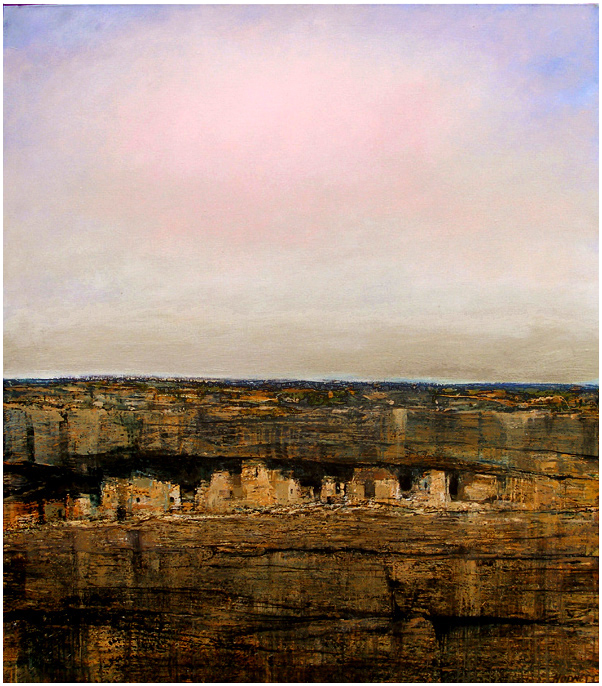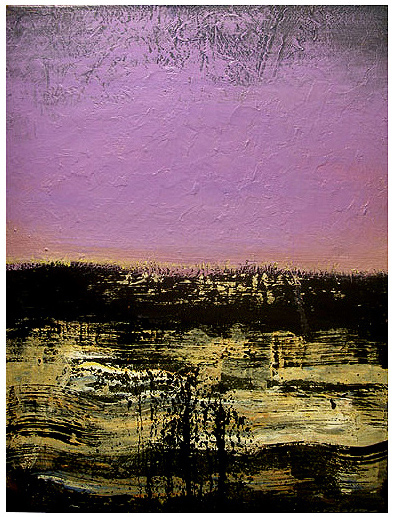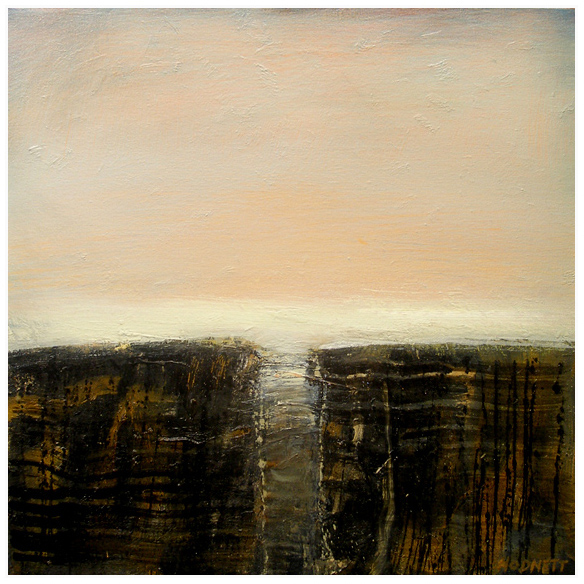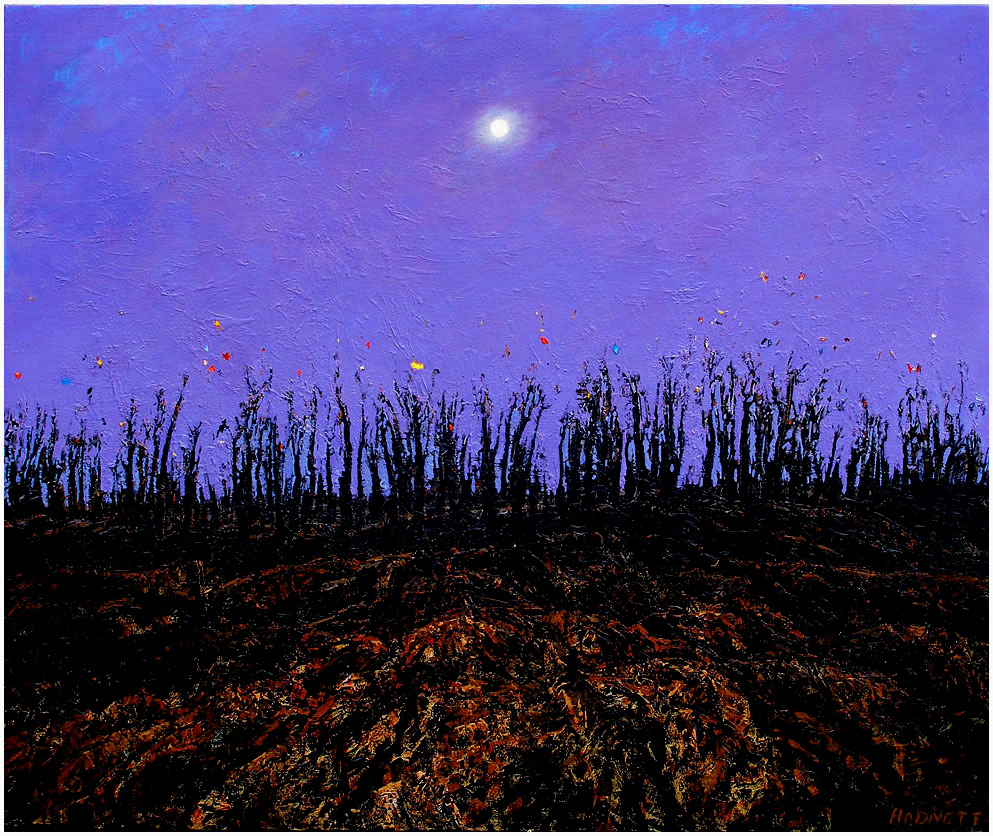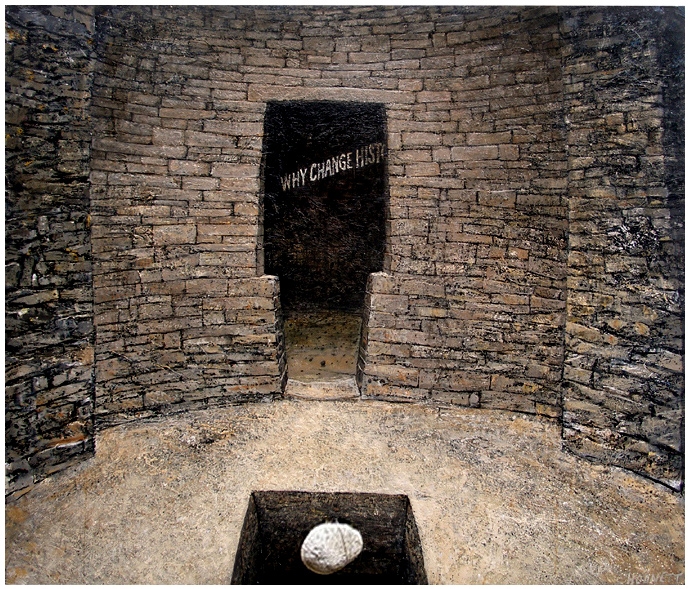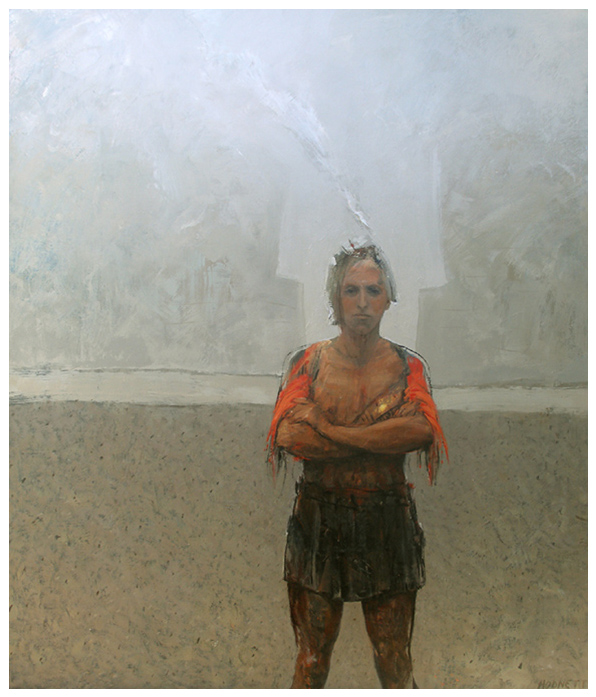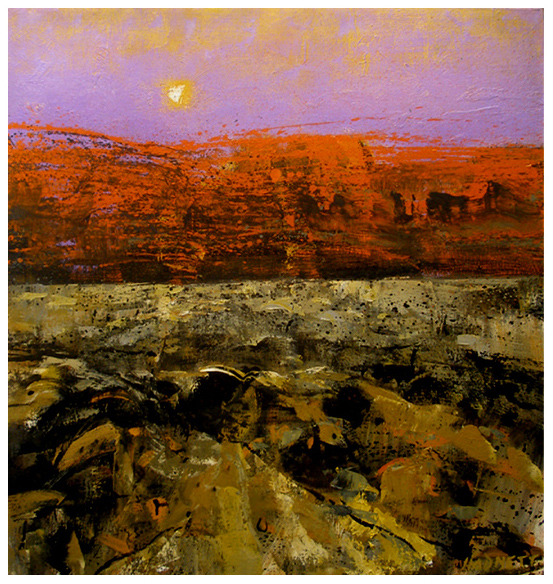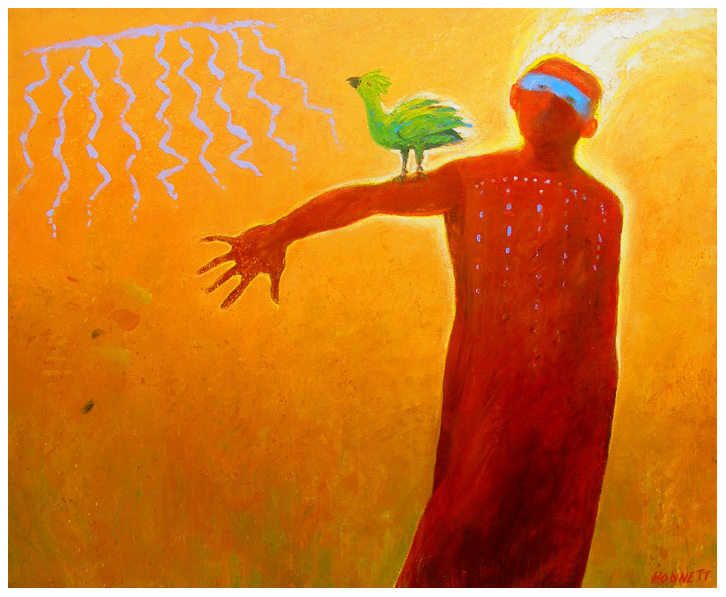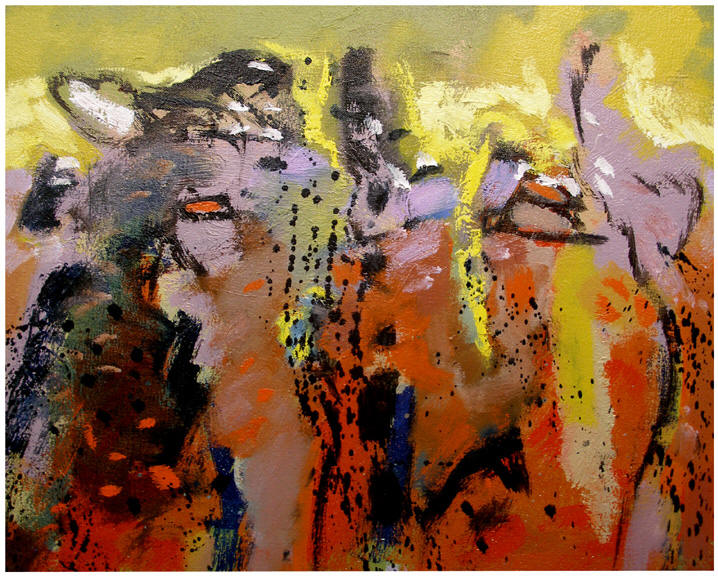|
Mesa Verde III |
Mesa Verde I
|
Mesa Verde II |
Mesa Verde Moon |
Click on images to enlarge
While visiting Mesa Verde in April 2006, the artist was surprised when a ranger, in response to a question regarding the Ancient Puebloan reasoning for building in such inaccessible places, told the audience that the Anasazi used the recesses in the cliff face because it provided suitable shelter from the elements as well as being in close proximity to water and arable land…“and the view wasn’t bad either”. While this may all be true, it is obvious that they didn’t just build there for the view. There is strong evidence of defensiveness in the reasoning of the original inhabitants. Even the access passages to the dwellings have hand and toe grips hollowed into the sheer canyon walls which are shaped and spaced in a very calculated way and have to be used in a very specific order so as to avoid getting stranded half-way up or down. The ranger went on to say that there was no evidence of violence among the Anasazi and their neighbours and therefore no real need to build defensively. This, he maintained, was borne out by the “fact” that no signs of any trauma to any parts of the bodies were encountered while excavating human remains at the site. This, according to others who actually worked at the site at the time of excavation, is historically incorrect. Upon further investigation, it was learned that at least one of the corpses excavated at Mesa Verde had an axe deeply imbedded in its skull, while other human remains showed extensive signs of trauma thus proving that there was indeed evidence of physical violence among the "enemy ancestors". Whether such trauma was due to ritualistic sacrifice or war-like activities is unclear.
|
Kiva |
Cliff Dweller
|
“Mesa Verde I", "Mesa Verde II", "Mesa Verde III” , "Mesa Verde Moon" , "Painted Desert" and "Moab I" are about the landscape, the sky and timelessness.
"Kiva" speaks directly to the mystery and sanctity of the sacred chamber, while the imaginary portrait of a "Cliff Dweller" allows us to ponder life in these precariously located dwellings. "Shaman and Rain Bird" is a homage to the shaman artists of the area and is based on a pictograph of the "Hitchhiker Panel" figure in Barrier Canyon.
|
Moab I
|
Shaman and Rain Bird |
Painted Desert |
Each painting has been approached from a different aesthetic and painterly perspective and serve to portray various aspects of ancestral culture in the Four Corners area of the American Southwest. The paintings were originally intended to be exhibited in the same space where they would nourish each other and stimulate wider debate regarding the historically accurate portrayal of archaeological evidence.
© Copyright Noel Hodnett - All rights reserved.
